Mobile app marketing requires a strategic approach that caters to various stages of the user journey, from creating awareness to retaining and re-engaging users. This comprehensive strategy ensures that your app gains traction, reaches its target audience, and maintains user engagement. Let’s explore the fundamental tactics for each phase of the mobile app marketing process: awareness, acquisition, retention, and re-engagement.
Remember that successful app marketing is an ongoing process that requires adaptation, creativity, and a user-centric approach. By understanding your app’s unique value proposition and connecting with your target audience, you can create effective marketing campaigns that drive app success and growth.
Benefits of App Marketing

- Increased App Visibility: App marketing strategies, such as app store optimization (ASO) and social media campaigns, increase your app’s visibility on app stores and online platforms. This higher visibility translates into more potential users discovering and downloading your app.
- Higher User Acquisition: Effective marketing efforts attract a larger number of users to download your app. By targeting the right audience segments, you can drive higher user acquisition rates, expanding your app’s user base.
- Enhanced User Engagement: Engaging marketing campaigns keep users interested and active within your app. Regular updates, notifications, and personalized content encourage users to interact with your app regularly, leading to improved user retention rates.
- Brand Awareness: Marketing efforts build brand recognition and awareness in the minds of potential users. A strong brand presence establishes credibility and trust, making users more likely to choose your app over competitors.
- Positive User Experience: Well-planned marketing strategies focus on providing value to users. This positive user experience enhances user satisfaction and encourages positive reviews and ratings, further boosting app credibility.
- Higher Revenue Generation: Effective monetization strategies, paired with successful marketing, lead to increased revenue. Whether through in-app purchases, subscriptions, or ads, a larger user base translates into higher revenue potential.
- User Loyalty and Advocacy: Engaged and satisfied users are more likely to remain loyal to your app and recommend it to others. Word-of-mouth recommendations from satisfied users can significantly contribute to organic growth.
- Data-Driven Insights: Marketing campaigns generate valuable data about user behavior, preferences, and interactions. Analyzing this data provides insights that help refine your app’s features, design, and overall user experience.
- Adaptability and Growth: Marketing strategies allow you to adapt to changing trends and user preferences, enabling your app to stay relevant and competitive in a dynamic market.
- Maximized App’s Potential: Effective marketing ensures your app reaches its full potential, achieving its intended goals and impacting a wider audience.
Steps for App Marketing
A. Awareness Phase: Building Recognition
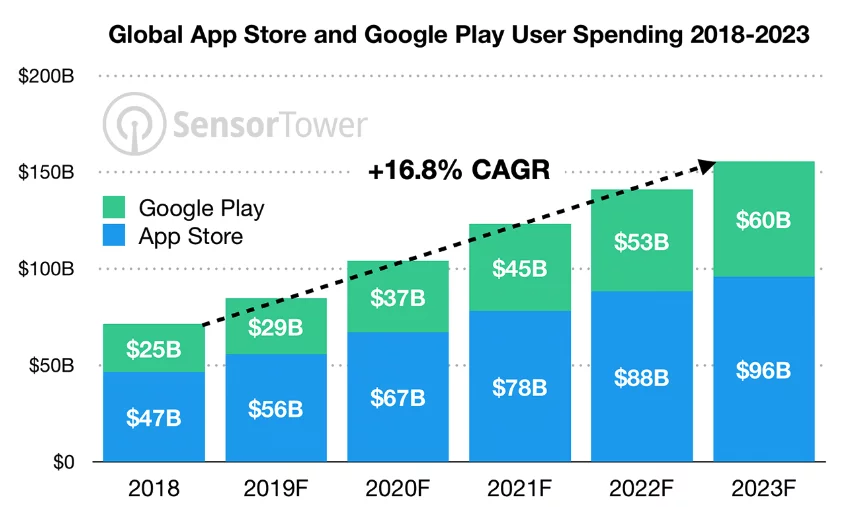
In the awareness phase, your goal is to introduce your app to a wider audience and create brand recognition. Here are some key tactics to consider:
- SEO (Search Engine Optimization): Craft compelling articles and content that incorporate relevant keywords. By optimizing your content for search engines, you increase your app’s visibility in organic search results, driving potential users to your website.
- Social Media Marketing: Establish a strong presence on social media platforms. Create and share engaging content that resonates with your target audience. Building a community around your app helps in generating interest and organic word-of-mouth promotion.
- Paid Advertising: Utilize paid social ads, search engine marketing, native ads, and display ads to reach a larger audience quickly. A well-targeted paid advertising campaign can drive traffic to your app’s landing page or website.
- Influencer Marketing: Collaborate with micro and macro influencers in your niche. Influencers can help spread the word about your app to their followers, adding credibility and expanding your reach.
- Content Marketing: Share the value and features of your app through short-form blogs and comprehensive guides. Educate your audience about how your app solves their problems or meets their needs.
B. Acquisition Phase: Converting Prospects into Users
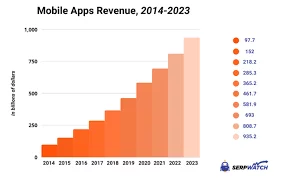
In the acquisition phase, your focus shifts to converting interested prospects into actual users. Consider the following tactics:
- App Store Optimization (ASO): Optimize your app’s listing on app stores by using relevant keywords, compelling descriptions, and eye-catching visuals. ASO helps improve your app’s discoverability within the app stores.
- Giveaways: Attract potential users by offering giveaways or contests. Encourage users to download your app in exchange for a chance to win a prize, creating a sense of excitement and engagement.
- Landing Page: Create a user-friendly landing page that highlights your app’s benefits, features, and user testimonials. Optimize the page for conversions, collecting user emails for future communication.
- Paid Advertising: Launch conversion-focused ads on social media platforms and search engines. These ads should highlight your app’s unique selling points and encourage users to download it.
C. Retention Phase: Engaging and Retaining Users
After acquiring users, your focus shifts to keeping them engaged and retaining their interest. Effective retention tactics include:
- Push Notifications: Send timely and relevant push notifications to users who have opted in. Use notifications to inform users about new features, updates, or special offers, encouraging them to revisit your app.
- Engagement Strategies: Implement loyalty programs, referral programs, and special offers to keep users engaged. Regularly communicate with your audience through email campaigns or in-app messaging.
- Personalization: Customize the app experience based on user preferences and behavior. Personalization enhances user engagement and makes users feel valued.
- Regular Updates: Notify users about new app updates and improvements. Encourage users to explore these updates, enhancing their experience and satisfaction.
- Chat Support: Provide users with a channel to provide feedback or seek assistance. Offering chat support or integrating a helpful chatbot enhances user satisfaction and loyalty.
D. Re-engagement Phase: Reviving Interest
If users become inactive, re-engagement tactics can help bring them back into the app’s fold:
- Retargeting Ads: Use retargeting ads to remind inactive users about your app. Show them relevant content or offers to reignite their interest.
- Personalized Recommendations: Provide users with personalized recommendations based on their past interactions with the app. This can reignite their curiosity and encourage them to explore more.
- Exclusive Content: Offer exclusive content or limited-time promotions to entice inactive users to return. Create a sense of urgency and value.
- Re-engagement Campaigns: Design targeted email campaigns or push notifications specifically aimed at re-engaging inactive users. Highlight new features, updates, or events.
By implementing these fundamental tactics in each phase of the mobile app marketing process, you’ll create a comprehensive strategy that maximizes user acquisition, engagement, and retention. Remember that continuous monitoring, analysis, and adaptation are crucial to ensure the effectiveness of your mobile app marketing efforts.
Effective Strategies for App Marketing
1. Leverage TikTok‘s Potential to Promote Your App

Harness the power of TikTok, a dynamic social media platform boasting a massive user base that holds great potential for showcasing your app to engaged audiences.
Tapping into TikTok’s vibrancy involves adopting a strategic content approach. Begin by identifying trending themes and experimenting with diverse content styles on your profile to ascertain what resonates most effectively.
Moreover, explore the realm of paid advertising campaigns on TikTok, each offering distinct avenues for reaching your target audience:
- Brand Takeovers: Command immediate attention by dominating TikTok with your brand for the day. This prime real estate ensures your app receives maximum visibility.
- Top View Ads: Capture the audience’s focus right from the start with ads that command the top spot of users’ feeds upon app launch.
- In-Feed Ads: Seamlessly integrate your app’s message into users’ content feeds, engaging them as they scroll.
- Branded Hashtags: Create and promote unique hashtags that encourage user-generated content, propelling your app’s visibility and engagement.
- Branded Effects: Infuse interactive creativity by offering users unique effects that augment their content creation experience.
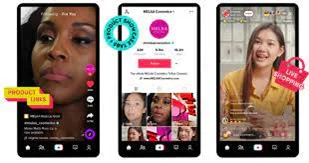
Effective Strategies for Succeeding on TikTok
- Authenticity Over Perfection: While professional aesthetics are valuable, focus on delivering a genuine, compelling pitch that resonates with the audience. Authenticity often trumps sheer polish.
- Collaborate for Impact: Collaborate with influential TikTok creators to amplify your message. Forge partnerships through paid collaborations, exclusive sharing links, or providing unique content access.
- Native Content is King: Adapt your content to TikTok’s distinct nature. Remember, what thrives on other platforms may not translate seamlessly here. Craft original, native content tailored to TikTok’s creative environment.
2. Unveiling the Power of App Localization

In the fast-paced realm of app development, a well-executed localization strategy can be a game-changer, propelling your app’s reach and engagement to new heights. Localization involves the art of tailoring your app to seamlessly function across diverse local environments, offering a personalized experience that resonates with users worldwide.
App localization delves beyond mere translation; it encompasses a meticulous adaptation of your app’s language and technical specifications to align with the preferences of distinct user groups.
An imperative facet of effective app localization is coding your app to support multiple languages. This strategic move instantly broadens your app’s accessibility and engagement, as users from various linguistic backgrounds can now interact with your creation. With every localized version you release, you significantly expand your app’s market potential, unveiling a world of new opportunities.
Mastering Effective Localization Strategies

- In-Depth Cultural Research: Beyond language, understanding cultural nuances is vital. Adapt visuals, symbols, and color schemes to resonate with the cultural sensitivities of each target audience.
- Localized Content: Tailor your app’s content to align with the cultural preferences and behaviors of specific regions. From images to text, resonate with your audience on a local level.
- Localized ASO (App Store Optimization): Optimize keywords, descriptions, and visuals to suit each market’s search behaviors, enhancing your app’s visibility in different app stores.
- Engage Native Speakers: Collaborate with native speakers for translations, ensuring linguistic accuracy and cultural appropriateness.
- User-Centric Testing: Engage local users for beta testing to identify any technical or linguistic glitches, ensuring a seamless user experience.
3. Unveiling the Power of Product Hunt
Product Hunt is a bustling hub where thousands of products make their debut to an engaged and discerning community. Entrepreneurs and creators can easily sign up and create a listing for their product, allowing it to be scrutinized, reviewed, and voted upon by users. The more upvotes a product receives, the higher it climbs in the ranks, ultimately gaining visibility and recognition.
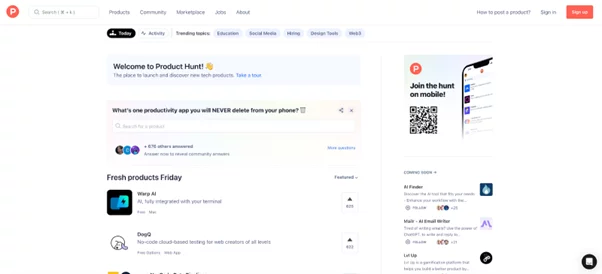
Strategies for a Resounding Product Hunt Launch
- Timing is Everything: Launching your listing early in the morning, specifically right after midnight on the West Coast, can work wonders. This strategic move grants you an entire day to garner upvotes, building momentum and visibility even before the West Coast awakens.
- Coordinate a Multi-Channel Campaign: Crafting a well-coordinated campaign across all your communication channels is pivotal. Develop a roadmap detailing how you plan to promote your Product Hunt listing on social media, newsletters, blogs, and more. This synchronized effort ensures that your audience is consistently engaged and informed.
- Craft an Engaging Listing: Your listing is your digital storefront, so ensure it’s compelling and informative. Present your app’s features, value proposition, and how it addresses user pain points. High-quality visuals and clear, concise copy are paramount.
- Tap into Your Network: Rally your existing network and supporters to rally behind your app. Leverage your connections in the industry, social circles, and professional networks to generate initial upvotes and discussions.
- Leverage User Engagement: Engage directly with users who comment on your listing. Address their queries, express gratitude for their support, and provide insights that showcase your app’s uniqueness and potential.
- Cultivate Authenticity: Authenticity is key to resonating with the Product Hunt community. Share your journey, challenges, and successes transparently. This fosters a genuine connection with potential users.
- Harness the Power of Influencers: Collaborating with influencers and thought leaders in your niche can amplify your launch’s reach. Their endorsement can lend credibility and encourage their followers to explore your app.
4. Setting the Stage for App Triumph
Your organic Twitter feed is the canvas upon which you can paint a vivid portrait of your app’s mission and the problems it seeks to solve. Fostering a community united by a shared purpose or challenges creates a magnetic pull that draws users to explore further.
For a more targeted and accelerated approach, Twitter ads come to the forefront. These ads are not just a display of your app’s brilliance; they are a conduit to compelling user engagement. By configuring the App Install destination, Twitter’s astute algorithms decipher the user’s mobile behavior and serve them the most relevant download link.
By seamlessly integrating organic engagement and strategic Twitter ads, you set the stage for your app to take center stage in the hearts and minds of your audience. Whether you’re creating a communal bond or unleashing the precision of Twitter’s targeting, your app’s journey on this dynamic platform can lead to unprecedented awareness and downloads.
Empower your app’s narrative, ignite conversations, and invite users to partake in a revolutionary experience. As you embark on this exciting journey, remember that Twitter is more than just a platform; it’s a vibrant realm of opportunities waiting to be seized.
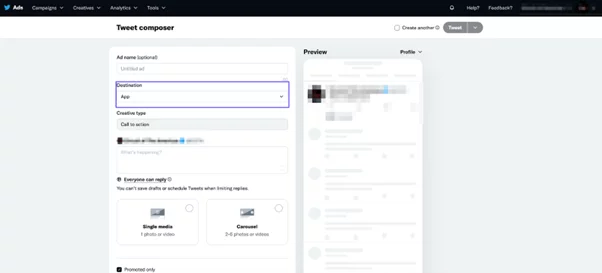
Strategies to Propel Your App’s Presence on Twitter
- Craft Captivating Visuals: The power of visuals is unmatched. Showcase your app’s essence through engaging screenshots and videos that tantalize the audience’s curiosity.
- Targeting Prowess with Advanced Search: Twitter’s Advanced Search function is your ally in identifying high-influence users who resonate with your app’s value proposition. This precision targeting can yield remarkable results.
- Elevate with Twitter Ad Campaigns: Dive into Twitter’s Ad dashboard and explore the App Install destination. Unleash the potential of customizable Twitter cards that elegantly present your app’s unique features.
- Riding the Waves of Engagement: Keep the momentum alive by actively engaging with users who interact with your content. Responding to queries, acknowledging feedback, and expressing gratitude amplifies your authenticity.
5. Harnessing the Power of Podcasts: Elevate Your App’s Presence
Podcasts stand as a platform where the captivating interplay between hosts and guests holds immense sway. Audiences are attentive and attuned, making it an ideal avenue for showcasing your app’s prowess.
Launching a podcast demands effort and commitment. To maximize your impact, align yourself with podcasts that have a thriving existence and a dedicated following. It’s in these established realms that your app can gain the exposure it deserves. When engaged audiences hear a host endorse your app or share their genuine experience, the resonance is unparalleled. As listeners tune in, they’re more likely to be influenced by these endorsements, translating into valuable downloads.
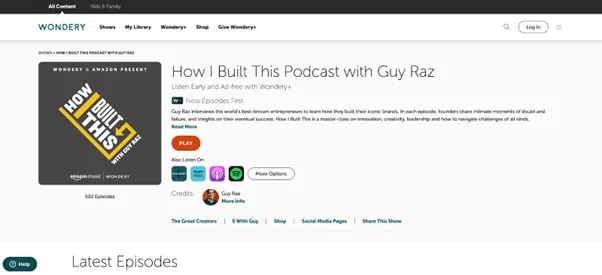
Navigating the Podcast Terrain: Strategies for Success
- Precise Pitching: Identify both popular and niche podcasts that harmonize with your industry. A tailored pitch highlighting the alignment between your app and the podcast’s theme can capture the host’s interest.
- Mastering the Podcast Appearance: If the opportunity to feature on a podcast arises, seize it. Approach the conversation with a succinct portrayal of your app’s value proposition. Convey the benefits it brings to users with clarity and conviction.
- Leverage Host Credibility: Collaborate with hosts to weave their reviews or endorsements into the conversation. Their credibility nurtures trust among listeners and can steer them towards embracing your app.
6. Harnessing Reddit‘s Power for App Marketing Success
Reddit emerges as a potent channel owing to its specialized and tightly-knit communities, each centered around a unique topic. The structure is built upon its “subreddits,” individual communities that revolve around specific interests, hobbies, or topics. This focused approach makes it a goldmine for targeting users who align with your app’s purpose and functionalities.
How it works:
- Keyword Exploration: Begin by utilizing Reddit’s search function to identify subreddits relevant to your app’s niche. By searching keywords and phrases that resonate with your app’s features, you can pinpoint subreddits where your target audience congregates.
- Engaging Thoughtfully: Active participation is key. Engage with existing conversations in the chosen subreddits by contributing insightful comments and providing valuable information. Establishing your credibility within the community is crucial before introducing your app.
- Seamless Integration: As you become a familiar presence, it’s time to introduce your app subtly. Weave mentions of your app into discussions where relevant, without sounding overly promotional. Authenticity is paramount.

Effective Strategies for Reddit App Marketing:
- Strategic Subreddits: Target subreddits with a minimum of 100 active members that align with your app’s theme. Even smaller communities can yield valuable downloads if they are highly engaged.
- User Feedback Engagement: Solicit user feedback within the community. This approach fosters a sense of belonging among users who feel they contribute to your app’s success.
- Leverage r/Apple: Utilize the specific subreddit r/Apple, which allows developers to promote their work on Sundays. Capitalize on this window to share your app with a relevant audience.
- Create Your Own Subreddit: Post-launch and after gaining traction, consider creating your own subreddit. This space becomes a hub for passionate users sharing a common interest in your app.
7. Unveiling Your App to the World via Hacker News
In the dynamic realm of app marketing, Hacker News, a media site under the esteemed Y Combinator umbrella, shines as a beacon of opportunity. Recognized as one of the world’s premier startup cohorts, Y Combinator has given rise to countless successful ventures. Here, we delve into the intricacies of effectively utilizing Hacker News as a launchpad for your app, ensuring that your endeavor gets the attention it deserves.
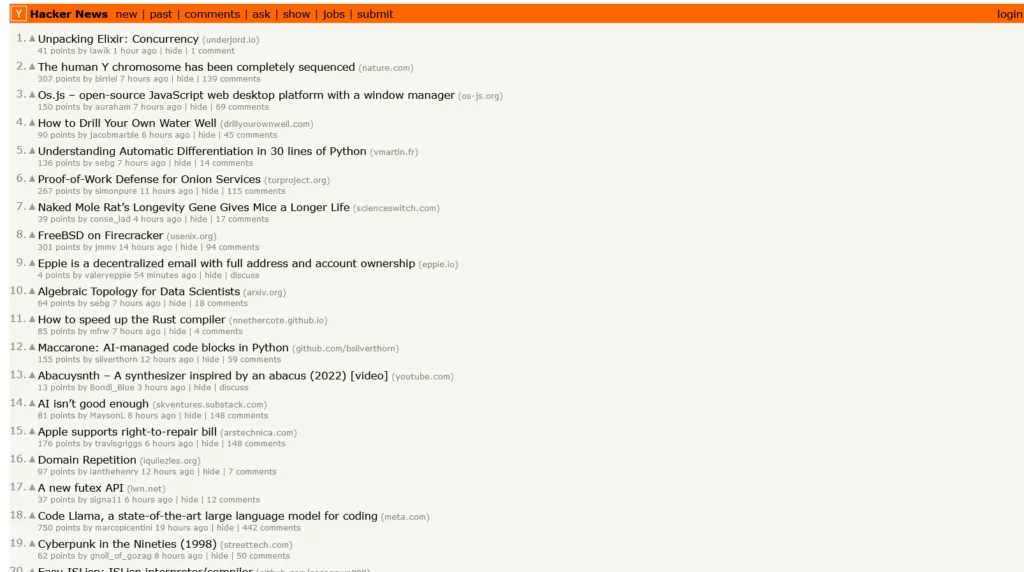
While Hacker News presents a golden opportunity for app promotion, it’s essential to approach it with finesse and respect for its community-driven ethos. Here are key strategies to make your app launch on Hacker News a resounding success:
- Engage Authentically: Resist the urge to use Hacker News merely as a promotional megaphone for your app. Instead, focus on engaging authentically with the community. Participate in conversations, share insights, and offer valuable input on tech-related topics.
- Leverage Existing Posts: You don’t always need to initiate a new post solely dedicated to your app. Explore existing discussions that align with your app’s niche or features. Engage in these comment sections, showcasing your expertise and subtly introducing your app where relevant.
- Strategic Standalone Posts: If you do decide to create a standalone post for your app launch, proceed with a coordinated approach. Ensure that your post offers genuine value to the Hacker News community. Craft an informative and engaging description that highlights your app’s unique attributes.
- Collaborate with Fellow Posters: Collaboration can be a potent tool on Hacker News. Coordinate with other users who share your interests or goals. Encourage them to engage with your post, offering their insights and perspectives. This collaborative effort can amplify the visibility of your app.
7. Understand Discord Communities
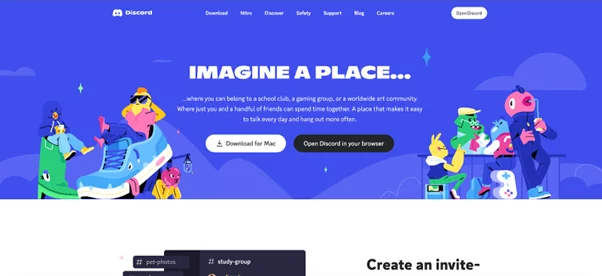
Discord, initially designed for gamers, has rapidly expanded its scope to encompass diverse interests, hobbies, and professional fields. These informal communities, often referred to as “servers,” bring together individuals who share a common passion. As Discord’s user base continues to surge, its significance as a viable marketing channel becomes increasingly apparent.
Strategies for Success on Discord Communities
- Purposeful Engagement: When venturing into Discord communities, resist the temptation to engage solely for promotional purposes. Instead, focus on forming genuine connections with community members. Invest time in understanding the culture, values, and interests of the group.
- Contributing Value: Contribute to discussions, offer insights, and engage in meaningful conversations related to your app’s niche. By showcasing your expertise and providing valuable input, you establish yourself as a valuable member of the community.
- Timing Is Key: Timing plays a crucial role in introducing your app to the community. Avoid the temptation to immediately share your app upon joining. Instead, bide your time and wait for opportune moments when the community is receptive to new introductions.
- Relationship Building: Forge relationships with other community members, including influencers and moderators. Building rapport with individuals who hold influence within the community can significantly amplify your app’s visibility.
- Feedback Loop: Leverage the community as a resource for feedback. Share insights about your app’s development journey and seek input from fellow members. Their feedback can offer valuable perspectives and potential improvements.
- Share, Don’t Spam: When the time is right, share information about your app authentically. Avoid spamming the community with promotional content. Instead, craft a thoughtful introduction that highlights the value your app brings to the community.
- Network Effect: Encourage community members to share your app with their networks. Word of mouth within the community can result in organic growth and heightened interest in your app.
8. Harnessing YouTube for App Marketing Success
As the digital landscape expands, YouTube emerges as a formidable platform for app marketing. This section delves into the strategies behind partnering with YouTubers to effectively showcase your app, offering both organic and paid tactics to capture your audience’s attention.
YouTube, a global hub of video content, presents a captivating avenue to introduce your app to a vast audience. What could be more compelling than learning about your app from a favorite YouTuber or through an engaging demo video?
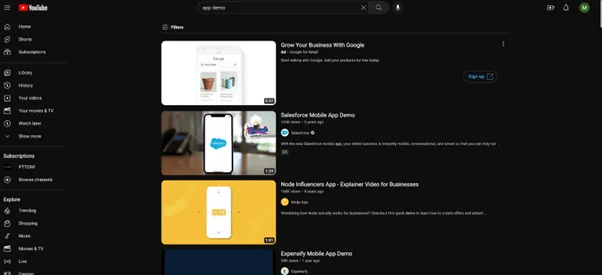
1. Organic Engagement:
- Keyword Optimization: Optimize your video elements – titles, descriptions, and tags – with relevant keywords. This optimization significantly enhances the discoverability of your videos within search results when users seek apps similar to yours.
- Engaging Demo: Create a captivating demo video that showcases your app’s features and functionality. A visually appealing, high-quality demo can hook users’ interest and compel them to explore your app in-depth.
- Behind-the-Scenes: Offer an authentic glimpse into your app’s development journey. Sharing your dedication, challenges, and triumphs can forge a personal connection with viewers, resonating deeply and fostering engagement.
2. Collaborating with YouTubers:
- Influencer Partnerships: Identify YouTubers whose content aligns with your app’s niche and values. Collaborating with them allows you to create content that spotlights your app’s unique offerings, leveraging their existing audience.
- Growing YouTubers: Engage with up-and-coming YouTubers within your app’s domain. Their willingness to explore new products, coupled with their growing audience, can facilitate exposure to potential users.
- Paid Partnerships: Consider investing in paid partnerships with influencers who possess the ability to review, demonstrate, or discuss your app. Their endorsement carries substantial weight and can resonate with their loyal subscribers.
3. Crafting Compelling Content:
- Demo and Explanation: Craft a detailed demo video that not only showcases your app’s functionality but also educates viewers on its usage. Follow up with an explanatory video, delving into the app’s creation, its benefits, and its unique value proposition.
- User Stories: Leverage authenticity by featuring real user experiences. Incorporate testimonials, case studies, or anecdotes that vividly illustrate how your app has positively transformed users’ lives.
4. Outreach and Networking:
- Niche Relevance: Prioritize collaboration with YouTubers whose content aligns closely with your app’s niche. Their audience’s interest and engagement increase the likelihood of your app resonating with them.
- Personalized Approach: Reach out to YouTubers with a tailored pitch. Highlight the alignment between your app and their content, emphasizing how your app can add value to their audience’s experience.
- Resource Allocation: Tailor your collaborations based on your budget. Larger YouTubers can yield extensive exposure, while smaller ones offer access to niche, engaged audiences.
5. Evaluating Success:
- Performance Metrics: Monitor key video engagement metrics, including views, likes, comments, and shares. These metrics provide insights into the resonance and impact of your collaborative efforts.
- User Acquisition: Quantify the effectiveness of your YouTube collaborations by tracking the number of downloads or sign-ups attributed to these collaborations. This data reveals the tangible impact on your app’s user base.
9. Harnessing Indie Hackers for App Marketing Triumph
Indie Hackers stands tall as a pivotal media site in the realm of tech enthusiasts and creators. Unveiling your mobile app marketing on this platform can orchestrate a significant surge in downloads, rendering it an indispensable addition to your marketing repertoire. This segment embarks on an elaborate journey, delineating strategies for making the most of Indie Hackers, alongside its significance and engagement techniques.
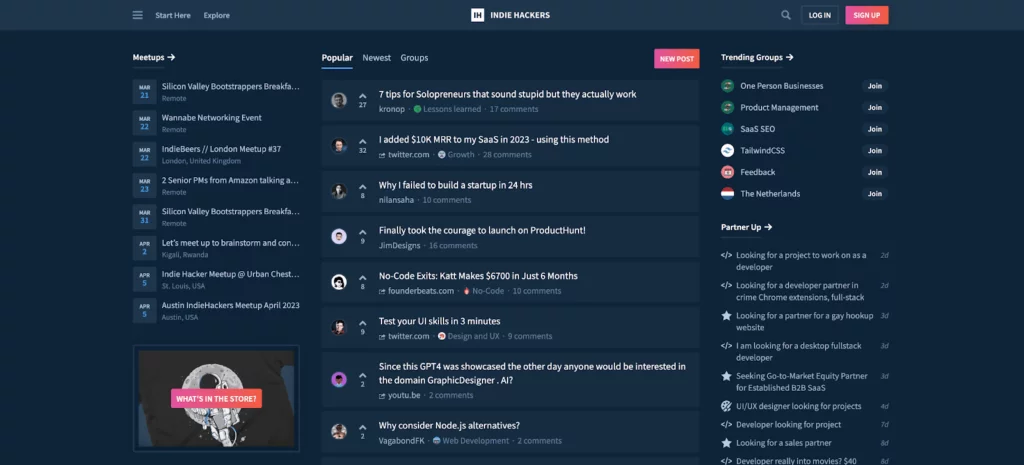
Effective Strategies for Successful Indie Hackers App Promotion
Indie Hackers is a thriving community of tech enthusiasts and builders, making it a valuable platform for promoting your app. To ensure your app gains traction and downloads on Indie Hackers, implement these effective strategies:
- Identify Influencers: Collaborate with respected influencers within the Indie Hackers community. Seek out individuals who have established themselves and have a significant following. Their endorsement can lend credibility to your app and attract attention from their dedicated followers.
- Craft a Compelling Story: Share your app’s journey in a way that resonates with the Indie Hackers audience. Explain the problem your app solves, the challenges you’ve overcome, and your vision for its future. An authentic and engaging narrative can captivate users and encourage them to explore your app.
- Coordinate Engagement: Similar to other platforms, coordination can amplify your presence. Reach out to fellow Indie Hackers users who share your interests. Engage in discussions, leave thoughtful comments, and upvote relevant posts. This collaborative approach can attract attention to your app when you’re ready to showcase it.
- Participate in Feedback: Engage in discussions and provide valuable insights on topics relevant to your app’s niche. This involvement showcases your expertise and establishes you as a valuable contributor to the community. When you eventually introduce your app, users will be more receptive.
- Host an AMA (Ask Me Anything): Organize an AMA session on Indie Hackers, allowing users to ask you questions about your app, its development, and its benefits. This interactive format can generate curiosity and provide an opportunity to share detailed insights about your app’s value proposition.
- Utilize Visuals: Visual content stands out. Create eye-catching graphics, screenshots, or infographics that showcase your app’s features, benefits, and user experience. Visuals can quickly convey your app’s value and spark interest.
- Offer Exclusive Insights: Provide behind-the-scenes glimpses into your app’s development process. Share challenges, breakthroughs, and lessons learned. This transparency humanizes your project and fosters a deeper connection with the community for mobile app marketing.
10. Strategies for Effective Real-World Feedback Collection for Your App
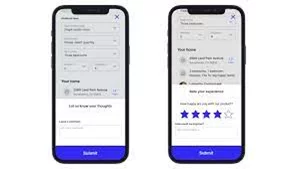
Gathering real-world feedback is a crucial step in refining your app and enhancing its user experience. Here’s a comprehensive approach with effective strategies to obtain valuable insights from various sources:
- Targeted Outreach: Engage potential users from various circles, including friends, family, colleagues, and strangers interested in your app’s niche.
- Diversity: Seek feedback from diverse age groups and backgrounds to gain a comprehensive perspective.
- Social Events: Introduce your app at gatherings, parties, and events for casual feedback collection.
- Workplace Engagement: Demonstrate your app to colleagues during breaks or lunchtime for workplace insights.
- Campus Partnerships: Collaborate with universities to test your app among student groups.
- Public Spaces: Engage with individuals in cafes, libraries, and co-working spaces.
- Social Media: Promote your app on your channels, encouraging followers to share their experiences.
- Incentives: Offer rewards like in-app currency or free trials for valuable feedback.
- Feedback Stations: Set up spots at events to gather spontaneous reactions.
- Engagement: Build rapport, explaining your app’s purpose and benefits to encourage feedback.
- User Journals: Encourage users to maintain notes about their experiences over time.
- Testimonials: Request users to share their stories and experiences.
- Workshops: Host interactive sessions to observe user interactions and gather insights.
- Feedback Integration: Show users their input leads to improvements, fostering involvement.
- Continuous Loop: Maintain ongoing feedback channels, updating users about app progress.
11. Creating Tangible Connections: Gather Feedback and Foster Word-of-Mouth
Engaging with real-world users offers invaluable insights and fuels organic promotion. Here’s how:
- Social Environments: Capitalize on cafes, universities, and communal areas to engage users in-person and gather feedback.
- Incentives: Encourage immediate app downloads by offering small rewards like virtual currency or promo items.
- University Collaborations: Partner with colleges for user testing, extending your app’s reach and gaining diverse perspectives.
12. Establishing a Beta User Group for App Feedback
One of the crucial steps in refining your app’s user experience is to establish a Beta User Group, consisting of individuals who are using your app for the first time. This group will provide invaluable feedback regarding their likes, dislikes, and their overall experience with your creation. By gaining insights from this core focus group, you can make informed decisions to enhance your app’s functionality and user satisfaction.
Incorporating a focus group methodology into your beta testing process is vital for obtaining meaningful feedback, which will aid in refining your app for optimal performance.
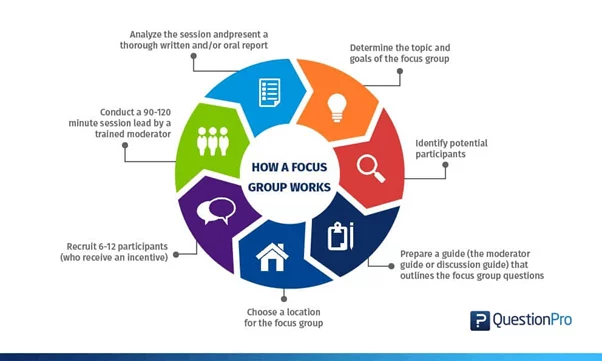
Beta Testing Strategies:
- Diverse User Selection: When forming your Beta User Group, aim for diversity in terms of age, background, and technical expertise. This variety ensures that you receive feedback from a wide range of perspectives, leading to more comprehensive insights.
- Clear Feedback Guidelines: Provide specific guidelines to your beta testers on the type of feedback you’re seeking. This might include aspects like user interface, functionality, performance, and any potential issues they encounter.
- Feedback Channels: Set up dedicated channels, such as online forums or feedback forms, to streamline the feedback collection process. Having organized channels makes it easier for beta testers to provide structured input.
- Regular Check-ins: Conduct regular virtual meetings or video conferences with your beta testers to discuss their experiences and gather real-time feedback. These interactions foster a sense of community and engagement.
- Beta Version Updates: Release iterative versions of your app during beta testing. Each version can address specific aspects based on previous feedback, allowing you to progressively enhance the app’s performance.
13. Utilizing Burst Campaigns for Accelerated Advertising
In the pursuit of rapid app visibility and user acquisition, Burst Campaigns emerge as a powerful strategy. These campaigns involve intensive paid advertising efforts, with the primary goal of presenting your app to as many individuals as possible within a brief timeframe, typically 1-2 days.
For effective execution, platforms like Facebook offer targeted app advertising opportunities. Facebook’s app ads allow you to pinpoint relevant users, optimizing your reach. By leveraging these ads, you can pay per download and showcase your app through custom Facebook cards, effectively directing interested users to your app’s download links.
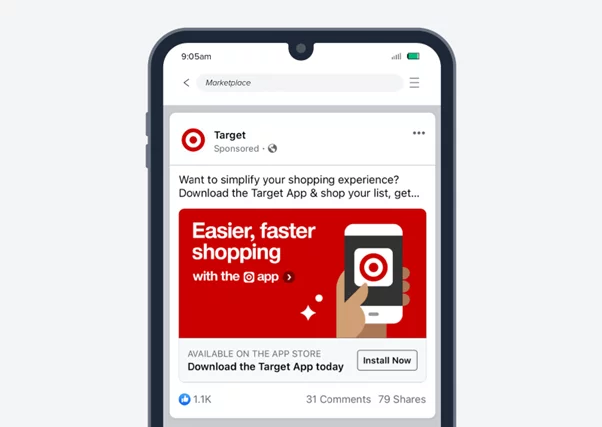
Burst Campaign Strategies:
- Segmented Audience Targeting: Divide your target audience into segments based on demographics, interests, and behaviors. Tailor your Burst Campaigns to these segments to ensure your ads resonate effectively.
- Compelling Ad Content: Craft attention-grabbing ad creatives with captivating visuals and concise, impactful messaging. Use compelling calls to action that encourage users to take immediate action.
- Limited-Time Offers: Introduce limited-time promotions or discounts as part of your Burst Campaign. This instills a sense of urgency, motivating users to download the app quickly to take advantage of the offer.
- A/B Testing: Experiment with different ad variations, headlines, and visuals to identify the most effective combinations. A/B testing helps optimize your campaigns for higher conversion rates.
- Localized Campaigns: If your app caters to different regions, create localized Burst Campaigns with content and imagery that resonate culturally. This approach boosts engagement and conversions.
- Real-time Monitoring: Monitor key metrics like click-through rates, conversion rates, and cost per download in real time. This enables you to make prompt adjustments if a campaign isn’t performing as expected.
- Post-Download Engagement: Plan for engaging users after they download your app. Send welcome messages, provide onboarding assistance, and encourage them to explore key features.
- Social Proof: Incorporate user testimonials and positive reviews from beta testers or early adopters in your Burst Campaigns. Social proof enhances credibility and encourages trust.
Conclusion:
Marketing a mobile app is a multifaceted journey that requires a deep understanding of your target audience, a well-crafted strategy, and continuous adaptation. The success of your app’s marketing efforts depends on effectively reaching users, addressing their needs, and building a strong brand presence in a competitive market. From identifying your app’s unique value proposition to selecting the right channels and optimizing your approach, every step of the marketing process plays a critical role in driving app downloads, engagement, and revenue.
By embracing a comprehensive approach that combines various marketing tactics, such as app store optimization (ASO), social media marketing, influencer collaborations, content creation, and user engagement initiatives, you can maximize your app’s visibility and impact. Additionally, continuous monitoring and analysis of user behavior, feedback, and campaign performance will enable you to make informed decisions and refine your marketing strategy for better results.
FAQs on App Marketing
How important are user reviews and ratings for app marketing?
User reviews and ratings are crucial for app marketing as they influence users’ perceptions of your app’s quality and credibility. Positive reviews and high ratings can attract more downloads, while addressing negative feedback demonstrates your commitment to improvement.
Should I collaborate with influencers to promote my app?
Collaborating with influencers can be effective in reaching a wider audience and building credibility. Choose influencers whose audience aligns with your target demographic, and ensure that the collaboration feels authentic and relevant.
What is the significance of user engagement in app marketing?
User engagement is essential for retaining users and encouraging them to continue using your app. Engage users through personalized content, notifications, rewards, and updates to maintain their interest and loyalty.
How do I measure the success of my app marketing campaigns?
Measure campaign success through key performance indicators (KPIs) such as app downloads, user engagement, retention rates, conversion rates, and return on investment (ROI). Use analytics tools to track user behavior and gather actionable insights.
Can I update my app marketing strategy over time?
Yes, app marketing strategies should be adaptable and evolve over time. Regularly analyze the performance of your campaigns, keep up with industry trends, gather user feedback, and make necessary adjustments to optimize your marketing approach.



